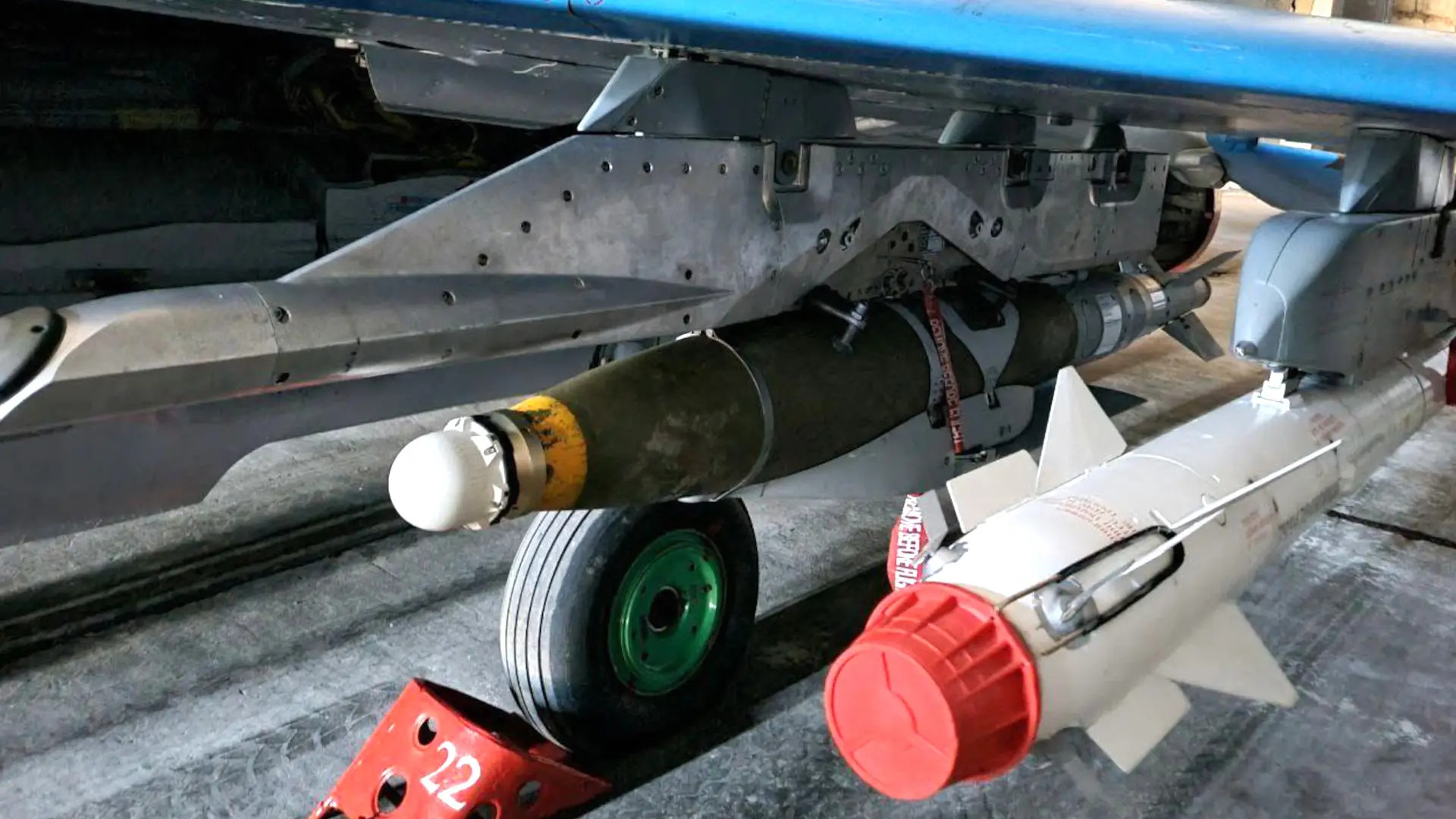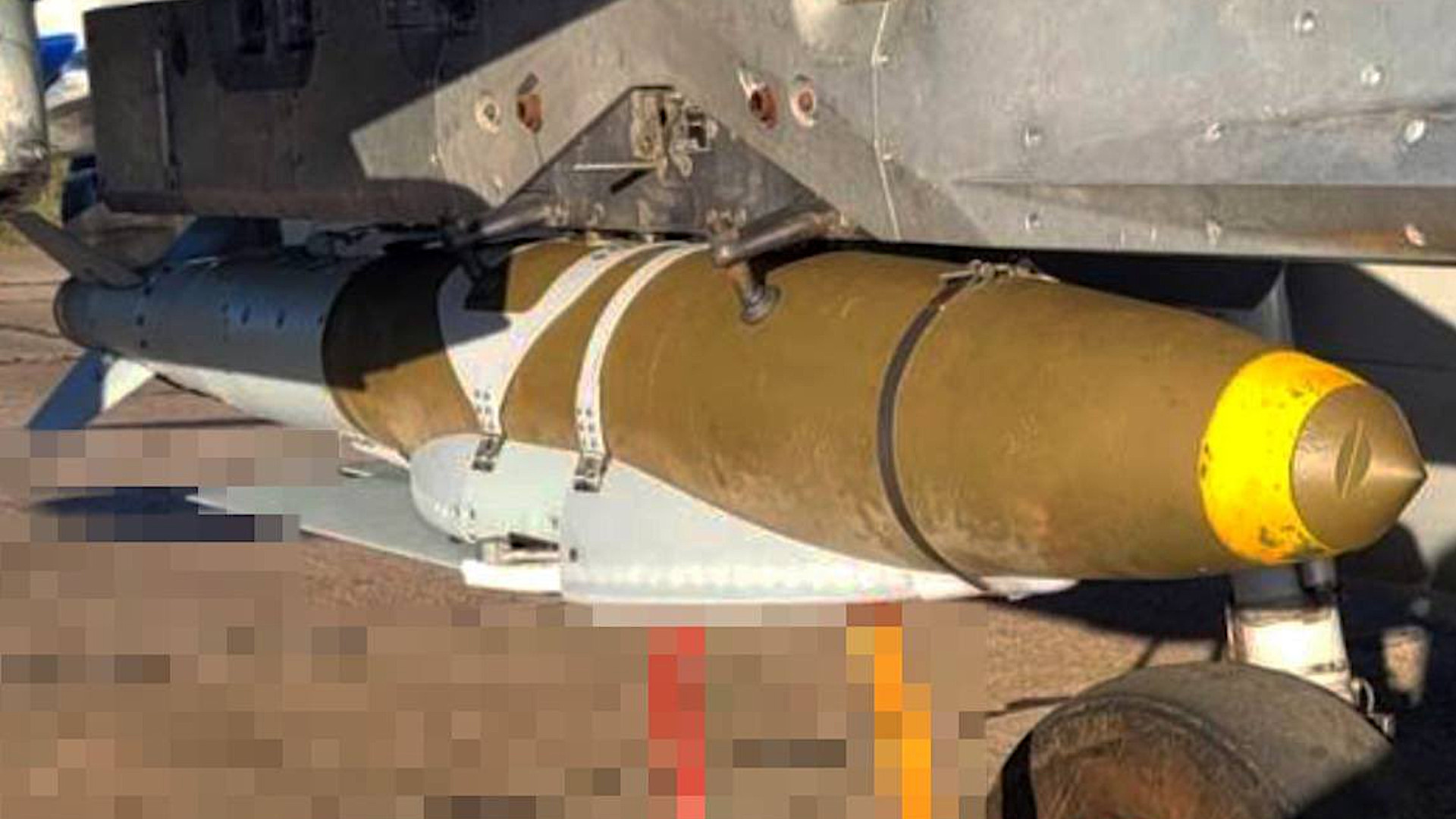The U.S. Air Force is buying add-on seekers designed to give Joint Direct Attack Munition-Extended Range (JDAM-ER) precision-guided bombs supplied to Ukraine the ability to zero in on GPS jammers. In effect, this would turn one of the weapons most impacted by this countermeasure into one used to directly attack it. This follows growing reports that Russian jamming is severely degrading the effectiveness of Western-supplied GPS-guided munitions, including JDAM-ERs.
The Pentagon announced today that the U.S. Air Force Life Cycle Management Center (AFLCMC) had awarded Cypress, California-headquartered Scientific Applications and Research Associates Inc. a contract valued at $23,554,341 for “the acquisition of Home-on GPS Jam seekers” and the “integration of the extended range seekers into existing Joint Direct Attack Munition wing kits.”
“This contract involves Foreign Military Sales to Ukraine,” the Pentagon’s announcement also noted.
JDAM-ERs have been in use in Ukraine since at least March 2023. The Ukrainian Air Force’s Soviet-era MiG-29 Fulcrums and Su-27 Flankers are being used to employ these weapons with the help of specialized pylons and tablet-based control systems in their cockpits.

Details about the seeker system itself are limited, but Scientific Applications and Research Associates Inc. (SARA) has been developing capabilities like this for integration onto various precision-guided munitions for years now.
“Should an enemy strive to complicate the battlefield by stray or competitive RF energy, SARA’s HOJ subsystems can enable a host guided bomb or missile to engage it as the system or operator might prefer,” according to a brochure the company put out circa 2018. “HOJ is compact and 1/10th the production cost of prior-generation systems. HOJ uses solid state components and a common munition interface which provides rapid, low-cost integration.”


This is also not the first time that one of SARA’s home-on-GPS-jam seekers has been integrated onto a U.S. precision-guided bomb.
In December 2020, the U.S. Air Force conducted a test as part of its Golden Horde networked munitions program that involved GBU-39/B Small Diameter Bombs (SDB) each fitted with “a home-on-GPS-jam seeker that gathers information about the battlespace, a software-defined radio for communication between weapons, and a processor preloaded with collaborative algorithms,” according to an official release at the time. The test also made use of “technology developed by the Air Force Research Laboratory (AFRL) and Scientific Applications & Research Associates.”

It may be possible to incorporate a home-on-GPS-jam capability into other Western-supplied precision-guided munitions for Ukraine in the future, including AGM-88 High-Speed Anti-Radiation Missiles (HARM). HARMs already have a home-on-jam capability, but it’s not clear if GPS frequencies are within their existing range, if they could be readily modified to have that functionality, or if Ukrainian combat jets would have the ability to employ them in this mode.
Regardless, providing Ukraine with JDAM-ERs that can zero in on Russia’s GPS jammers not only makes good sense, but it could be an increasingly critical capability.
Just last week, Bill LaPlante, U.S. Under Secretary of Defense for Acquisition and Sustainment, the Pentagon’s top weapons buyer, talked about an unspecified precision-guided weapon system falling prey to a combination of GPS jamming and other factors. LaPlante, who was speaking at an open event hosted by the Center for Strategic and International Studies (CSIS) think tank, did not name the weapon system, but provided details that strongly implied it was the Ground-Launched Small Diameter Bomb (SDB), as you can read more about here.
“Excalibur precision artillery rounds initially had a 70% efficiency rate hitting targets when first used in Ukraine. However, after six weeks, efficiency declined to only 6% as the Russians adapted their electronic warfare
systems to counter it,” Dr. Daniel Patt, a senior fellow at the Hudson Institute think tank in Washington, D.C., said in written testimony submitted ahead of a hearing before members of the House Armed Services Committee back in March. Patt said this data had come by way of Dr. Jack Watling, a senior research fellow at the Royal United Services Institute (RUSI) think tank in the United Kingdom. The 155mm Excalibur artillery shell uses a GPS-assisted guidance package.
There had been even earlier reports that JDAM-ERs and ground-launched 227mm Guided Multiple Launch Rocket System (GMLRS) artillery rockets were also being negatively impacted by Russian GPS jamming.
Russia’s use of GPS jamming extends well beyond Ukraine. In the Baltic region, Russia’s employment of such systems, likely to try to protect critical facilities and assets from long-range Ukrainian drone attacks, has become so pronounced that it is now having serious and potentially dangerous impacts on commercial aviation.
With all this in mind, arming Ukraine with munitions capable of homing in on Russian GPS jammers could be very valuable for targeting those systems and, by extension, helping to eliminate, or at least mitigate the impact, of the interference they cause. While destroying the emitters directly will certainly help other guided weapons get to their targets, the mere threat of being destroyed by a standoff weapon as a result of emitting should suppress the jammers’ use. At the very least, it could result in them being activated for shorter periods of time before relocating.
The plan now to send JDAM-ERs equipped with the home-on-GPS-jamming seekers to Ukraine also raises the question about what kind of capabilities the U.S. military has in this regard that have not necessarily been publicly disclosed. The Air Force’s release about the December 2020 Golden Horde test appeared to be the first official mention of the integration of this capability onto the SDB.
This is doubly important given that reports of how Russian GPS jamming had been degrading the capabilities of U.S-supplied precision-guided munitions have pointed to worrying vulnerabilities in precision-guided weapons that American forces, as well as various allies and partners, also use. This is something The War Zone highlighted after Under Secretary of Defense LaPlante’s remarks last week. It makes sense then that the U.S. Air Force and the rest of the U.S. military would be eager to develop and field home-on-GPS-jam capabilities for its own use for the same reasons.
Altogether, the new contract to supply home-on-GPS-jam seekers for JDAM-ERs for Ukraine underscores that Russian jamming is a very real problem. It also points to work now being done to mitigate that issue, which could have ramifications well beyond this particular conflict.
Contact the author: joe@twz.com
